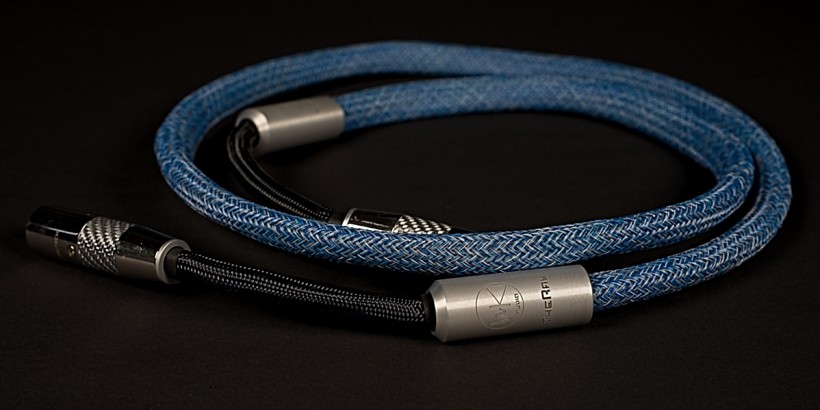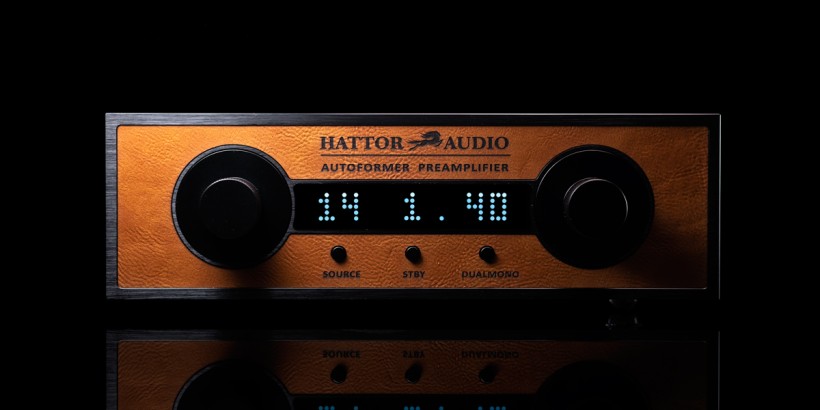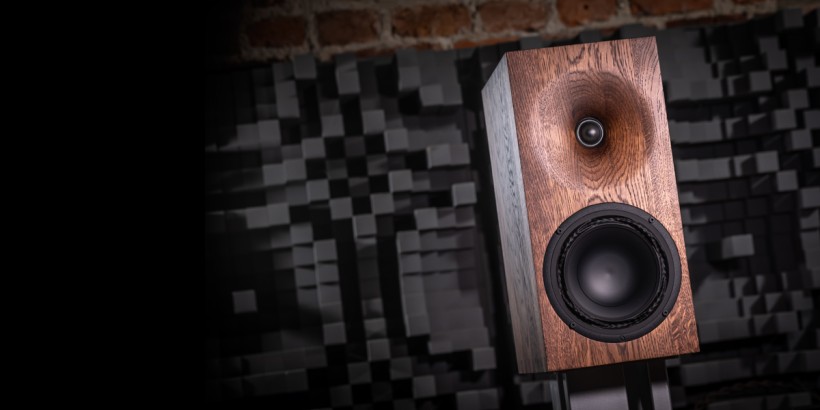For a vinyl fan, and I am one, it is truly interesting to observe how the market of phono stages has been evolving. There are still some designs based on ideas from 50 years ago and some that, at least in part, are surprisingly modern, just like the app-controlled Mola Mola Lupe MM/MC phono preamplifier. Let’s find out what kind of sonic results such a combination of some ‘good old’ and ‘new’ ideas can bring.
Introduction
When starting this review, I didn’t know much about Mola Mola’s history. I met the man behind it, Bruno Putzeys, at Munich High End Show, but we didn’t really have the time to talk. Still, let me share with you what I have learned by searching the depths of the Internet when preparing this text. It all started in 2012 with Bruno Putzeys partnering with Jorrit Mozes to develop products for a new brand. The latter developed a chassis, the former designed the electronics using his extensive engineering knowledge and experience as already before founding Mola Mola, Bruno Patzeys had worked for Philips in Belgium. Later his name was associated with such a renowned brands as Grimm Audio and Hypex. As if it was not enough for an impressive resume, he also co-founded Kii Audio and Purifi Audio.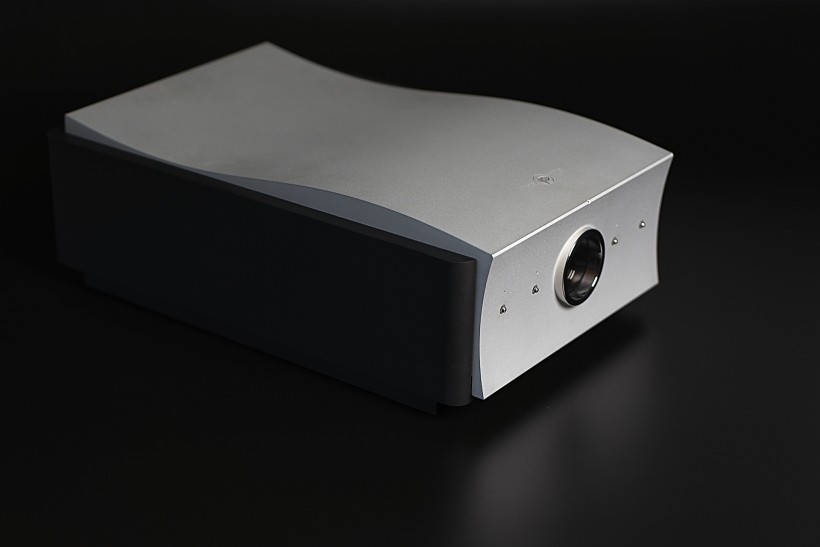
A side-note. I can’t help but wonder if the man I talked to some years ago in Kii Audio room in Munich (at HiFi Delux, for a change) discussing the advantages of the combined area of several smaller woofers (as in their speakers at the time) over a large radiating area of a single big woofer (or, the point I argued, the other way around), was also him. I am not sure, probably not. None of us convinced the other one, although, which I am sure was a pure coincident, a year later (if I am not mistaken) Kii Audio presented new speakers with added subwoofer modules featuring large drivers… . And of digression.
Working for all those companies Bruno Patzeys became one of the best specialists of, particularly, Class D amplifiers, and SMPSs, and in fact, patented a new type of the former. No wonder that amplifiers using Class D technologies became a specialty of the newly founded Mola Mola brand. Interestingly, the name of the brand, as well as successive components, comes from the names of various fishes. Anyway, the first designs prepared in 2012, in the form of a prototype, premiered still the same year at High End Show in Munich, and in January 2013 they made some splash on the American market, after debuting during the CES in Las Vegas.
Ever since Mola Mola company has been developing more and more products initially focusing and amplifiers and preamplifiers, and later on additional modules for them, including D/A Converter and phono stage. At some point, the latter evolved into separate components. Today the lineup includes Makua preamplifier, Kula integrated, Kaluga monaural power amp, Perca stereo amp, stand-alone Tambaqui D/A Converter, and the separate phono stage under review, Lupe.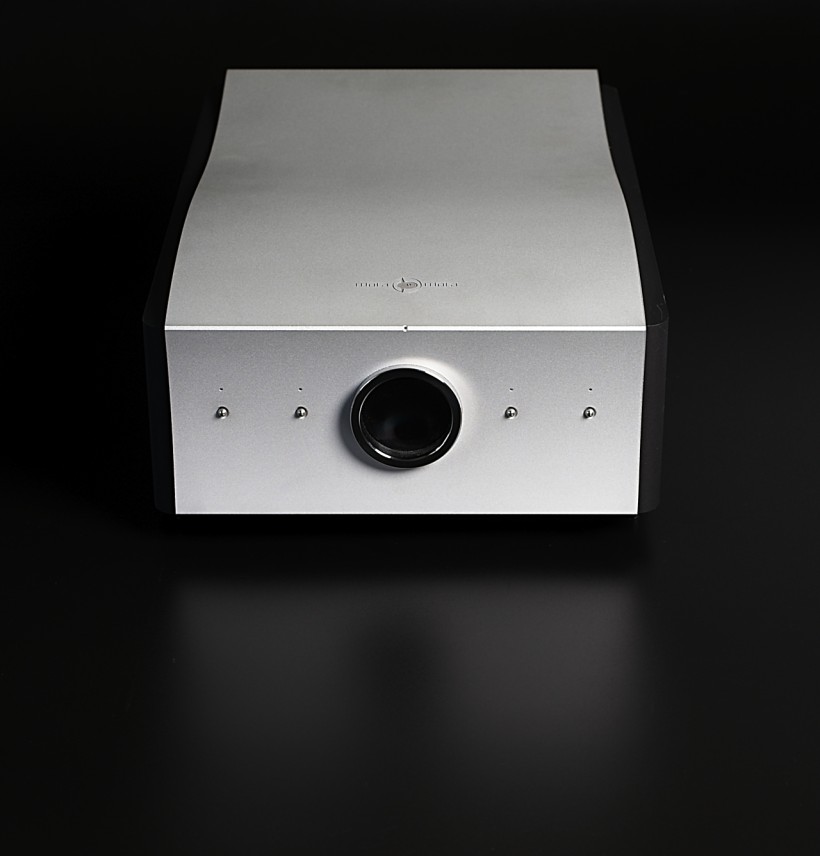
To finish this introduction with a bang let me quote sort of a motto of the company, as it explains in a simple way what they try to achieve with their products:
‘Mola Mola embodies the idea that once you’ve removed everything that isn’t the music, that what remains is the music.’
Simple, elegant, in line with the ‘high fidelity’ concept. Let’s see if the theory and practice actually meet in the Mola Mola Lupe phono stage.
Design and Features
Mola Mola Lupe is not a particularly big device. It actually, at least from the front, looks very similar, if not exactly the same, as the same brand’s D/A Converter Tambaqui DAC. It uses quite a characteristic in its form chassis that measures around 200mm wide, 110mm high, and 320mm deep. The thick, concave (!) front panel features a round ‘window’ in the middle with a small, 40mm in diameter, OLED display. The latter shows the selected input and parameters set for it. There is also a small power indicator LED centered above it where the front and top panels meet.
Four small buttons, equidistantly spaced, two on each side of the display, allow the user not only to select an active input but also to switch the device on and off. Each of them is accompanied by a white LED. The rear, sides, and bottom elements of the chassis are black flat surfaces, but the top panel, in natural, silver aluminum, reminded me of a wave. While highly aesthetically appealing this unorthodox shape of the chassis, as the manufacturer claims, also plays an important role in mitigating vibration-induced resonances.
As the chassis is neither particularly wide nor high and the device has a lot to offer in terms of connectivity, there is not much space left open on the rear panel. Moving from left to right, it contains a set of stereo XLR inputs, followed by 3 sets of stereo RCA inputs, one set of RCA, and another of XLR stereo outputs. You’ll find there also trigger connectors, for input and output, and the EIC power inlet.
As you have probably noticed, there was no mention of any sort of switches that would allow users to choose settings depending on the cartridge(s) they want to use. No worries, Mola Mola Lupe offers more than enough settings to allow you to optimize the performance regardless of what model of Moving Magnet or Moving Coil pickup you decide to use with it. It’s just that to operate all the settings and to choose among dozens of equalization curves you will need to install a free Mola Mola control app on your Android or Apple phone. All you have to do then is to start the app and connect the phone with Lupe via Blue Tooth.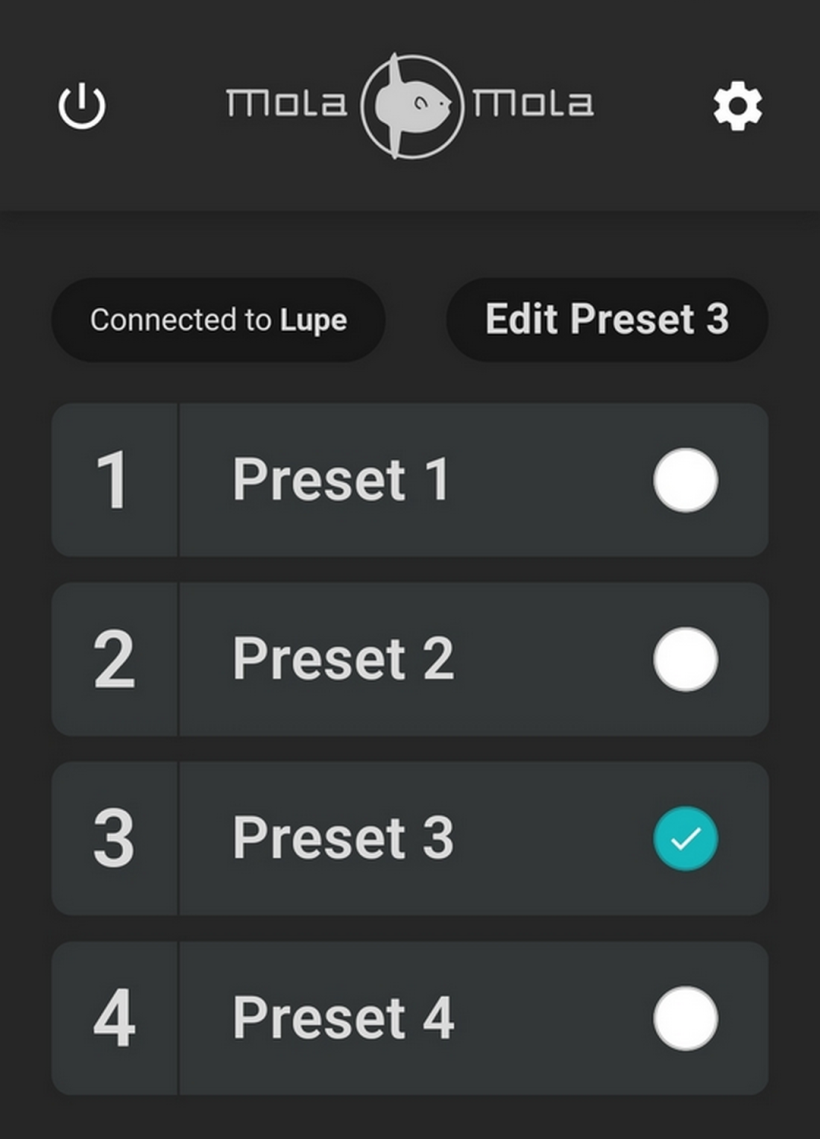
Once the connection is established an abundance of choices will become available to you without even moving from your chair or couch. First, you need to select either MM or MC ‘mode’. Depending on the initial choice a selection of gain settings will be available. For MM pickups one can choose either 45dB or 50dB. For Moving Coils the range of selectable gain levels is rather huge starting from 52dB and going up to 87 dB (with 57dB, 62dB, 67dB, 72dB, 77dB, and 82dB in between)! For Moving Magnets, you can choose one of the following capacitive loading values: 0pf, 50pf, 100pf, 150pf, 220pf, 270pf, 330pf, 380pf, and 120kΩ, 75kΩ, 47kΩ, 30kΩ, and 18kΩ resistive loadings. The same setting’s values for MC cartridges are 1kΩ, 650Ω, 400Ω, 250Ω, 150Ω, 100Ω, and 60Ω. Long story short – it does not matter what cartridge you use. Mola Mola Lupe can be optimized to play with any of them.
The Mola Mola app allows you to choose and save settings for each input separately and then fine-tune them at any time if you feel like changing loading or gain for the cartridge even just for a particular track. If that wasn’t enough, the Dutch manufacturer allows you to choose one of dozens of equalization curves for playback of any record, also those released at pre-RIAA standard times. A side note – if you feel like it you can play with those even when using RIAA standard following releases as it changes their sound and sometimes it can make them sound better or more to your liking.
That’s still not all because using the app you can choose any of those programmed curves but you can, sort of, make your own using the three settings that actually make up those curves, namely: Shelf, T1, and T2. As the manual explains:
‘Shelf sets the low shelf. Decrease it if you perceive the bottom end as too thundery or rumbly. Try increasing it if the bass lacks “authority”.
T1 sets the bass turnover point. Increase the time constant if the sound is too woolly, and decrease it if the sound is too thin.
T2 sets the treble roll-off. Increase the time constant if the sound is edgy, decrease it if it lacks bite.’
And then there are a few a bit more ‘standard’ functions, although you won’t find them in that many phono stages. You can use the ‘Mono’ feature, which sums left and right channels together. Whenever needed you can turn the ‘Subsonic filter’ on (or keep it off) to filter out low-frequency noise. Note that the subsonic filter will automatically be engaged for 15 seconds when changing presets or settings like gain or phono element to block out any unwanted DC offset. Also, the subsonic filter will automatically be engaged when a large DC offset has been detected for more than a few seconds on one or both of the channels. Two polarity invert buttons allow you to invert the polarity (absolute phase) of the left and/or right channel.
Now, whether you will be using all those features is for you to decide. Yet, having them available may come in handy at some point, if, for example, you will add some old, pre-RIAA albums to your collection. Also, if you like to play with the sound of your setup, many of those extra features will come in handy and allow you to tune the sound (to a certain extent). If you want to use them you should study the very informative manual. If you’re a purist, you can just leave everything apart from the necessary settings alone – it is your choice.
Sound
For the test, I used my usual reference system, although there were some other components on loan that participated at some stages as well. One was the latest J.Sikora KV9 tonearm (not the MAX that we all know and love but the new, ‘regular’ KV9), and another was Van den Hul The Frog cartridge mounted in it. The other tonearm was J.Sikora’s KV12 Max with Air Tight’s PC-3 serving as my reference. As the Mola Mola Lupe features multiple inputs and allows to set parameters independently for each of them switching between the two arm/cartridge combos was very easy.
Now, having read the „Design & Features” section above, if you’re a vinyl aficionado like myself, and have hands-on experience with dozens of phono stages, you may approach the Mola Mola Lupe either with great enthusiasm for the convenience of its usage or with a suspicion that it was made for the ease of use which often in audio comes at the cost of performance. So before I even get to the description of its sonic performance let me put your mind at ease first. Lupe is extremely convenient to use once you get used to reaching for your smartphone whenever you want to change some settings (which took me a moment). If there is any cost to it, as one may suspect if for no other reason just because Bluetooth is used for communication, I couldn’t identify it.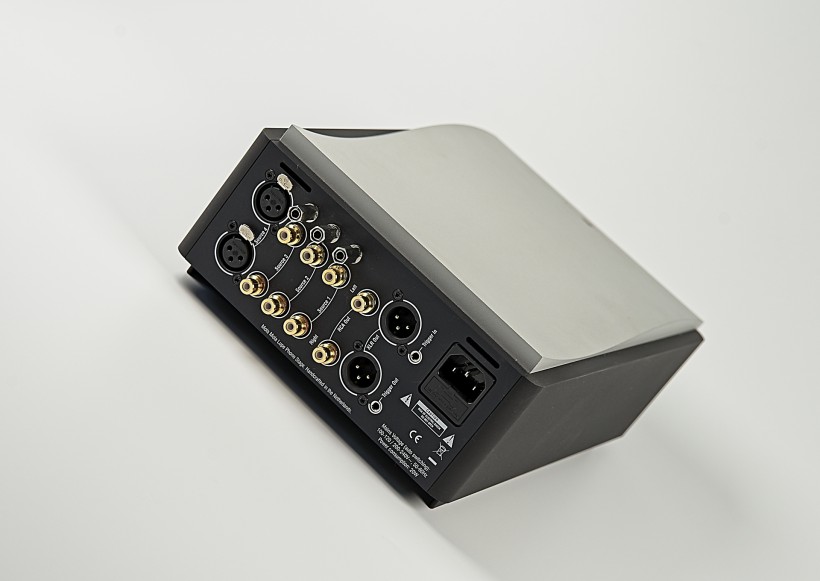
The price tag places Lupe at a level that doesn’t allow me to call it ‘cheap’ or ‘affordable’, yet compared to several 3, 4, 5 times, and more expensive competitors, considering the features such as number and types (balanced and unbalanced) of inputs and outputs, a wide array of settings including dozens of equalization curves, it does seem attractively priced for someone searching for a high-end device. Assuming, obviously, that this is a level of performance it truly has to offer. That was my initial assumption and that is what I wanted to assess.
After an initial period lasting a few days that allowed me to get used to the sound of Lupe a bit and to find optimal settings for each cartridge, I started ‘serious’ listening with Bastek Riedel and Piotr Steczek Kwartet’s „Radio Sessions w Studio Koncertowym im. Jerzego Haralda w Katowicach”. It’s a beautiful and sort of moody album, with Bastek playing guitar and singing with the accompanying band. Lupe managed to surprise me a bit with the way it presented this album.
I mean, I didn’t quite know what to expect yet, having associated Mola Mola (in my mind) with Class D amplifications I had some predictions about how it would sound. The latter didn’t quite work as Lupe surprised me right from the start because of how natural, warm, and palpable Sebastian Riedel (and the rest of the crew) sounded. In this regard it reminded me more of my Class A GrandiNote Celio mk IV phono preamplifier (see the review HERE) than the other of my references, ESE Lab Nibiru MC (see HERE). To be honest, I expected it to perform more like the latter, meaning to offer first of all a very precise, transparent, neutral, dynamic, and resolving sound. Each of those features could be pointed out as Lupe’s advantages, although they were not as prominent as with Nibiru MC. The presentation with the Dutch device was also almost tube-like (or Class A-like) rich, a touch (!) soft on both ends, even a little sweet at the top, and throughout the whole range saturated, tonally deep, and truly colorful.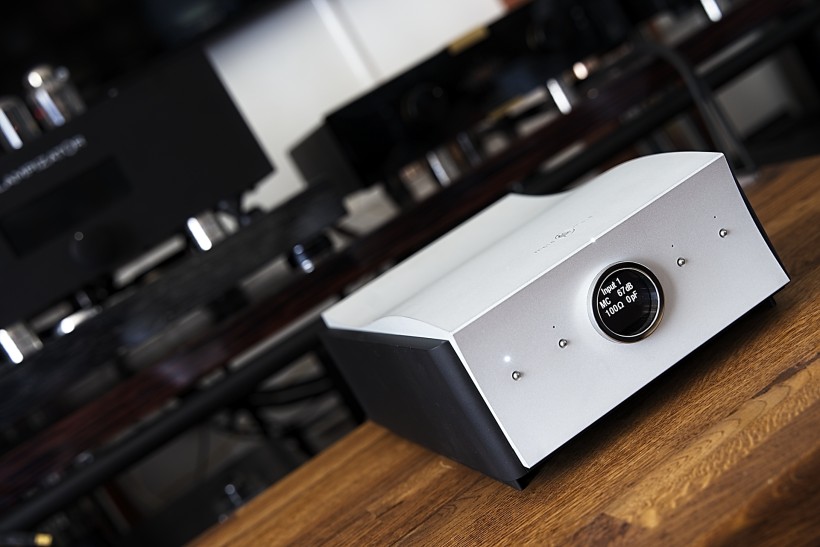
All that translated to a highly engaging delivery of the aforementioned album even despite the fact, it is not a technical masterpiece. It is a good recording, but not quite what one would call an audiophile-level one. That indicated, and later multiple other records I listened to would confirm it, that Mola Mola Lupe, is not a ruthless ‘joy-killer’ when it comes to non-audiophile grade recordings. It does not tend to emphasize the downsides of said albums but rather, at least when the music and performance are worth it, focuses the listener’s attention on the upsides.
In this case, as already mentioned, it was a palpable, natural presentation of vocals and accompanying acoustic guitar(and other instruments). It was natural because it seemed very accurate based on my experiences with this particular vocalist performing live. Not only the timbre of the voice, and the mannerisms, but also the level of dramatic expression, or the emotions that were rendered in a particularly convincing way, as well as the spatial aspect of the performance of the whole band. The less perfect sides of this recording, most of all, the less-than-ideal transparency and clarity of the sound, were not obscured. They were there, but they didn’t get in the way of the music and the performance as such, which allowed me to fully enjoy this beautiful album.
It was even more obvious with the anniversary release of one of my favorite albums by U2 „The Joshua Tree”. As I’ve mentioned numerous times before, I love U2 music, but I ‘hate’ the way it was recorded or produced. The better the playback system the more one can hear all the ‘dirt’ and imperfections, including some dynamics flatness of the performance. With the Mola Mola Lupe, the ‘dirt’ part became more of an intended element of the recording than a bothering one, hence improving the experience and letting me to focus more on the fantastic vocals by Bono, characteristic guitar licks by The Edge, and so on.
Let me emphasize once more – Lupe did not remove the elements that I usually perceive as ‘weaknesses’ of this album, but found a way to present them as a part of the experience or even found a way to use them to enrich it, as the creators intended (because the way U2 albums were recorded was intentional, it wasn’t a ‘sloppy’ work). Very few phono stages I listened to before had offered something similar, and most of them were tube devices. The very precise, transparent, pure-sounding ones usually emphasized the ‘dirt’ making things worse from the listener’s perspective, the warmer, richer ones, had often turned the whole into a ‘pulp’, blurring it, softening it to create the appearance of a ‘nicer’, more ‘friendly’ sound. That’s not Lupe, and that’s what in my eyes (or ears) made it quite special already at this stage of the assessment.
Moving on to more audiophile-grade albums I reached for Oleś Brothers & Christopher Dell „Komeda Ahead”. Dell’s vibraphone caught my ear right away (on side C) with how…, well, vibrant, lively, and energetic it seemed. The sound was presented quite closely to me, without pushing it in the front of the line connecting the speakers. It was achieved by saturating it, giving it proper weight, and presenting it in a convincingly three-dimensional perspective, very palpable, hence sounding very ‘here &now’. It felt almost as if it was played there, in my room. I couldn’t remember too many other phono stages that would have made the sound of this instrument on that album so intense, and so present. Only a handful of the very best, but also much more expensive ones, did that.
I guess, in part, it must have come from the way they recorded this album, as Marcin Oleś’s double bass was presented in a similarly large and weighted way. I could ‘see’ the size of the instrument, I could feel the power and depth of the sound. Lupe managed to combine perfectly fast, short, nicely differentiated string plucks with the deepening of the sound provided by the instrument’s huge body. The result was for me, a huge double bass fan, not only very pleasant to listen to, but also quite realistic, and these two don’t have to come together. When Bartłomiej’s drums came forward, it again felt as if I (almost) was in a room with the set. Almost, as I doubt I could bear the real volume of the drums in such a small space, it would be surely overwhelming. Fortunately, while listening to this recording using Mola Mola’s phono stage I had the comfort of adjusting the volume to my taste, hence a way to fully enjoy it.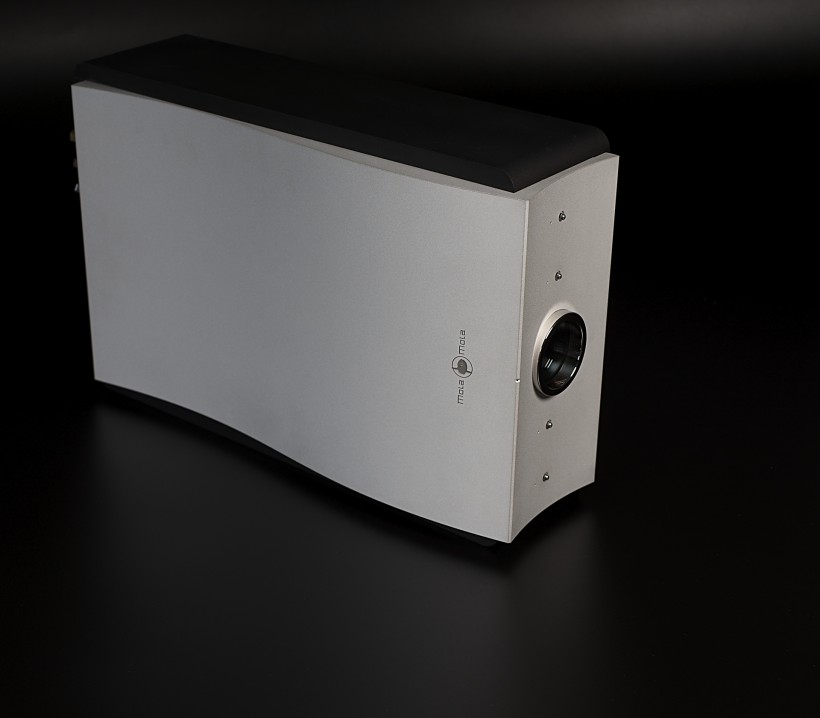
By the way, I did listen to these tracks quite loudly, and mean louder than I usually do, both due to good recording and playback quality. The dynamic range offered by the Dutch device was impressive. The sound was highly resolving, yet again the details and subtleties served as building blocks for the bigger, rich whole. They were not meant to attract attention on their own apart maybe from brief moments, as sometimes a single, particularly vibrant cymbal strike or a taut, springy, and powerful drum beat, or a long decay of a bass pluck did catch my ear for a second. Yet, these were only short moments. Most of the time it felt very „live” like, when the attention is focused on the big picture rather than tiny, little details.
There was proper transparency and clarity to the presentation but the sound was also almost tube-like rich, saturated, and smooth. The flow of music was very natural (again, a quality that I associate first and foremost with good tube designs), and the energy of the presentation was high, thus enhancing the impression of the performers’ presence. Despite the fact it is not an ‘easy’ music to listen to, due to the way Mola Mola Lupe delivered it, it kept me focused and involved till the very last note. Also because of the spatial aspect of the performance which was delivered in a very convincing way. I am not sure how it was recorded, but the reverb with Lupe sounded very realistic deepening the stage and creating an impression of a much bigger space than that of my room.
Switching gears again, at least in terms of music genre, I cued in Rudź & Pauszek’s „Panta Rhei” or, for those unfamiliar with these two Polish musicians, electronic music. As the title suggests, there is a special flow to the story told on this album using music. Electronic music as such, has nothing to do with ‘natural’ sound. Yet, when skillfully used, it allows performers to be particularly creative in telling large-scale stories, and creating highly immersive experiences that, despite using just two speakers, seem to surround a listener. Mola Mola Lupe again had a hand in a particularly convincing, attention-grabbing story-telling.
The scale of the performance was huge, way larger than the space between speakers. The sound was dense due to the richness of information, and yet the details popping up in various spots around the room were very precisely placed and pronounced, on the one hand sticking out for a second, on the other always being a part of a larger whole. It was a really interesting, immersive experience to listen to this album with Lupe, especially since it’s been quite a while since I’d listened to it last.
Next, following the ‘electronic music path’ I reached for Dead Can Dance’s „Into The Labyrinth”. While a representative of the same genre, the music of DCD is quite different from the previous album. It is known for amazing vocals by Lisa Gerrard (and to some extent also Brendan Perry) but it also is a good way to test component’s/system’s ability to deliver the deepest, most powerful electronic sounds while not ‘forgetting’ about the rest of the range and keeping a proper balance between all sub-ranges. With Mola Mola Lupe it sounded impressive. The scale and sheer power of the music, the mighty depths of the lower end, the crispness and clarity of the top, and the richness of a touch warm, touch soft, very natural sounding midrange combined into a refined, fully engaging performance that was a blast to listen to.
Next on was Patricia Barber’s „Companion”. A great live recording and high-quality release (MoFi, two-disc, 45 r.p.m.) with fabulous vocals, and a great accompanying performance that was supposed to start to let me know the limits of what Mola Mola Lupe had to offer. It didn’t quite work as the limits were seemingly not there, or at least I was unable to recognize them. Track after track was presented effortlessly, with ease and full control. Patricia’s voice was absolutely stunning, deep, dark, soft, yet powerful, and freakishly present. That’s the feature that I expect from the very best, tube phono preamplifiers, not (relatively, for the high-end class) reasonably priced solid-state ones. Yet, that’s what I got with Lupe.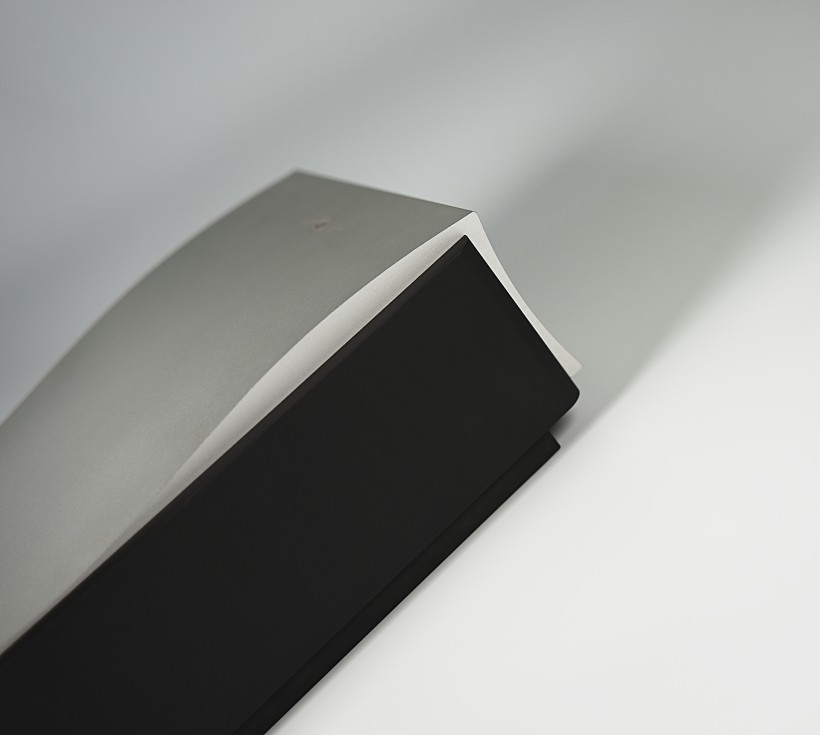
While the Dutch phono stage impressed me with its rich and saturated tone, it was not a feature that it imposed on all albums it played. I found it out when listening to the wonderful Jan Garbarek’s „Legend of the Seven Dreams” album. It by itself sounds a touch bright or at least not as rich as many other albums. Sure, some phono stages get rid of this inherent ‘brightness’ by adding some warmth to it, or smoothing things out a bit, which may be pleasant but it’s cheating, for one, and means not following the rules of ‘high fidelity’. Mola Mola Lupe did not cheat. The music still sounded a little bit bright but there was nothing unpleasant about it. It clearly seemed a feature of this recording, not to say quality, not its flaw. The performance was lively, and vivid, had a natural flow to it, thus offering an exciting, highly satisfying experience.
I kept trying to push the limits of Lupe’s performance by moving on to even more complex music, starting with Holt’s „The Planets” (on Decca with Los Angeles Philharmonic conducted by Zubin Mehta). This time it was not the scale or power of the presentation that impressed me most, as some (way more expensive) phono stages outperformed the Dutch device in these regards. Yet, I couldn’t help but admire the highly orderly way Lupe delivered such a complex and dynamic performance. It did show me again how resolving, and well-differentiating phono preamplifier it was.
The Mola Mola didn’t present the orchestra from up close. Quite the opposite, I ‘saw’ it from a distance which supported the impression of a more ‘holistic’ approach to presentation. The tested device delivered the performance as if it was played by one, although admittedly rich, and complex instrument, rather than dozens of separate ones. While doing so it still allowed me to focus whenever I wanted to on separate groups of instruments or in some cases even on single instruments.
The last album I listened to was Mozart’s „Le Nozze Di Figaro” with Teodor Currentzis conducting Musica Aeterna. I love Mozart, this opera, and this particular performance/recording. Mola Mola Lupe reminded me quickly why. In contrast to „The Planets” I ‘sat’ way closer to the stage. The latter was much deeper, which was accentuated by the reverb on the beautifully, amazingly expressive vocals. The orchestra was powerful, its dynamics when needed, explosive, and yet the whole had this unique flow and coherence needed for master-level storytelling.
Lupe skilfully exploited the way this album was recorded and created a totally immersive, large-scale yet intimate experience. Large-scale because, while I ‘sat’ close to the stage, the power of the orchestra, its complexity, and its effortless momentum were on full display. Intimate, because it seemed as if I could grab the singers with my hand, they were so close, so palpable, and they sounded so natural. On full display was also this stunning combination of richness and clarity of the sound. That’s why the sound of the harpsichord was unmistakably beautiful, the wind instruments attacked with such purity, crispness, and power and yet there was no brightness or harshness to their sound. That’s also why a whistle on the B side startled me as if I didn’t know it was coming or as if someone did it unexpectedly right next to me.
Summary
The representatives of the price range Mola Mola Lupe belongs to, do not that often find a way into my room. I’ve tested many more and much more expensive, and many less expensive phono preamplifiers. Hence it is not easy for me to compare it directly to other devices based strictly on ‘bang for buck’ criteria. On its own, it is an excellent performer that belongs to the high-end class, no doubt about it. Not only does it offer impressive and refined, dynamic and natural, resolving and spatial, and very, very musical performance, but on top of that only very few other devices can fully compete with it feature-wise.
Multiple inputs (XLR and RCA), as well as outputs, a wide range of settings that will allow a user to optimize the performance of any cartridge, and dozens of equalization curves that can be used to best accommodate any record from any time. What more could you expect for the money? Convenience? Mola Mola has it covered. The fact that one can change loading or gain (or capacitance when using MM cartridge) settings ‘on the fly’ without moving from the listening spot using an app on one’s phone is another huge advantage. So if you’re on the market for a high-end phono stage give yourself a chance to experience Mola Mola Lupe’s performance. You will be able to play the ‘good old’ vinyl in a very modern, not to say ‘hip’ way, and the worst that can happen is that you may like it.
Price (when reviewed):
- MOLA MOLA LUPE: 36.900 PLN (in Poland); 8.000 EUR (in France)
Manufacturer: MOLA MOLA
Polish Distributor: SOUND SOURCE
Distributor for France, Monaco and Switzerland: PRESTIGE AUDIO DIFFUSION
Technical specifications (according to the manufacturer):
- Input noise (MC): 0.35nV/rtHz
- Input noise (MM): 0.9pA/rtHz
- Sensitivity: variable from 30uV to 5mV
- THD, IMD: not measurable
- RIAA conformance: +/-0.1dB
- Subsonic filter: -3dB @20Hz
- Inputs: 3 x RCA, 1 x XLR
- Outputs: 1 x RCA, 1 x XLR
- Gain settings: 52dB, 57dB, 62dB, 67dB, 72dB, 77dB, 82dB, and 87dB
- Resistive loading settings: MM: 120kΩ, 75kΩ, 47kΩ, 30kΩ, and 18kΩ; MC: 1kΩ, 650Ω, 400Ω, 250Ω, 150Ω, 100Ω, and 60Ω
- Capacitance loading settings (for MM): 0pf, 50pf, 100pf, 150pf, 220pf, 270pf, 330pf, 380pf
- Equalization curves: RIAA + dozens of others, plus individual settings of Shelf, T1, and T2 parameters
- Supply voltage: 90-135 / 180 – 270 Volt AC/47-63Hz (Auto Switching)
- Power Consumption: 25 Watt
- Dimensions (W x H x D): 200mm*110mm*320mm
- Weight: 5.1 kg
- Fuse: T1,6A 250V 5x20mm ceramic
Associated equipment:
- Digital source: a custom passive server with WIN10, Roon, Fidelizer Pro 7.10, JCAT NET XE, and JCAT USB XE cards with FERRUM HYPSOS Signature power supply, KECES P8 (mono) linear power supply for the server, JCAT USB Isolator
- D/A Converter: LampizatOr Pacific 2 +Ideon Audio 3R Master Time (USB signal regenerator)
- Analog front end: J.Sikora Standard MAX turntable, J.Sikora KV12 tonearm, J.Sikora KV12 MAX tonearm, AirTight PC-3, Audio Technica PTG33 Prestige, phono stages: Grandinote Celio MK IV, ESE Lab Nibiru V 5.
- Power amplifiers: GrandiNote Shinai, Circle Labs M200, Art Audio Symphony II (modified)
- Preamplifier: Circle Labs P300
- Loudspeakers: GrandiNote MACH4, Ubiq Audio Model ONE Duelund Edition.
- Interconnects: Bastanis Imperial x2, Soyaton Benchmark, Hijiri Million, Hijiri HCI-20, TelluriumQ Ultra Black, KBL Sound Himalaya 2 XLR, David Laboga Expression Emerald USB, David Laboga Digital Sound Wave Sapphire Ethernet
- Speaker cables: Soyaton Benchmark Mk2
- Power cables: DL Custom Audio 3D-S-AC Connect, LessLoss DFPC Signature, Gigawatt LC-3
- Power: Gigawatt PF-2 MK2 and Gigawatt PC-3 SE Evo+; a custom power line with Gigawatt LC-Y in-wall cable; Gigawatt G-044 Schuko and Furutech FT-SWS-D (R)
- Network: Silent Angel Bonn N8 + Silent Angel Forester F1 + optical LAN isolator
- Racks: Base VI, Rogoz Audio 3RP3/BBS
- Anti-vibration accessories: ROGOZ-AUDIO SMO40 and CPPB16 platforms and ROGOZ AUDIO BW40MKII feet, OMEX Symphony 3S, Franc Accessories Ceramic Disc Slim Feet and Wood Block Platform, Graphite Audio CIS-35 and IC-35 Premium



























